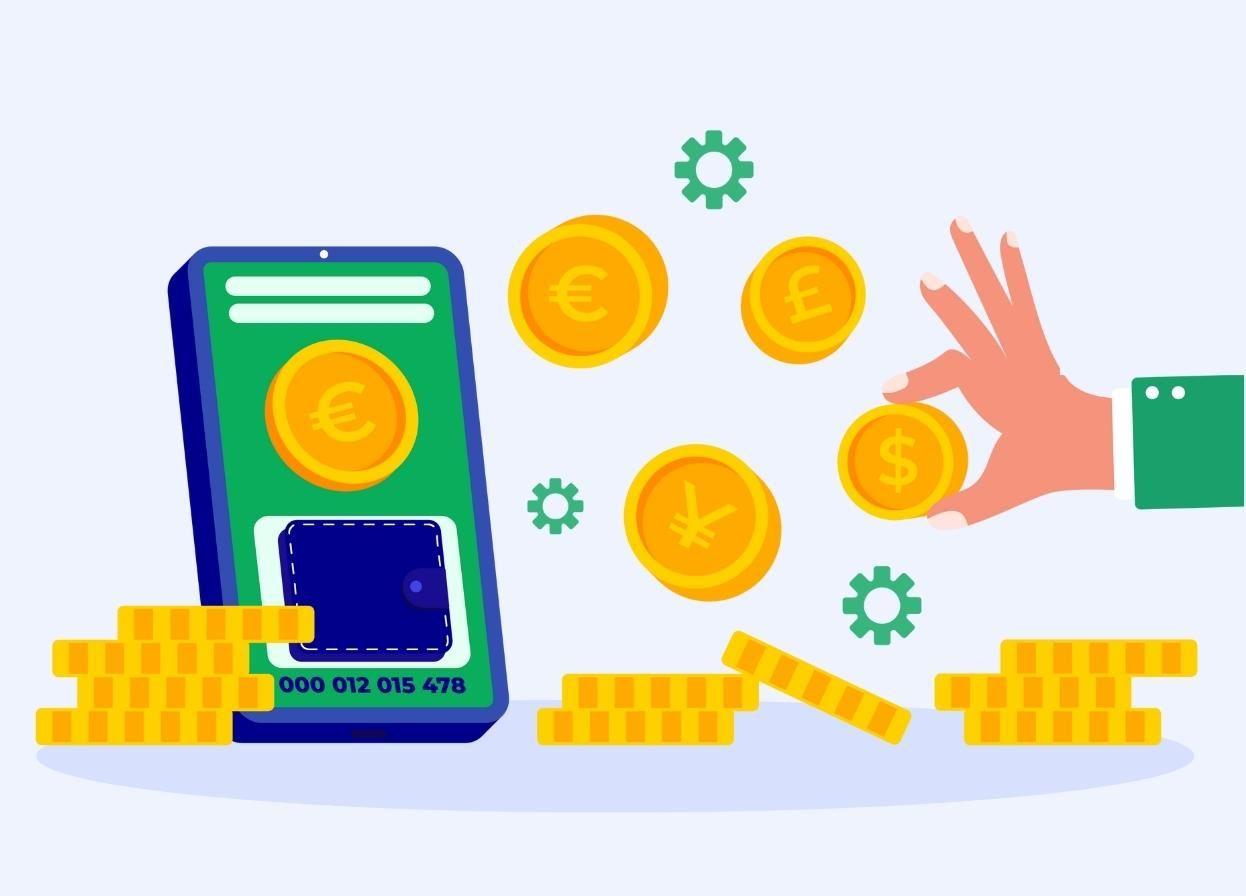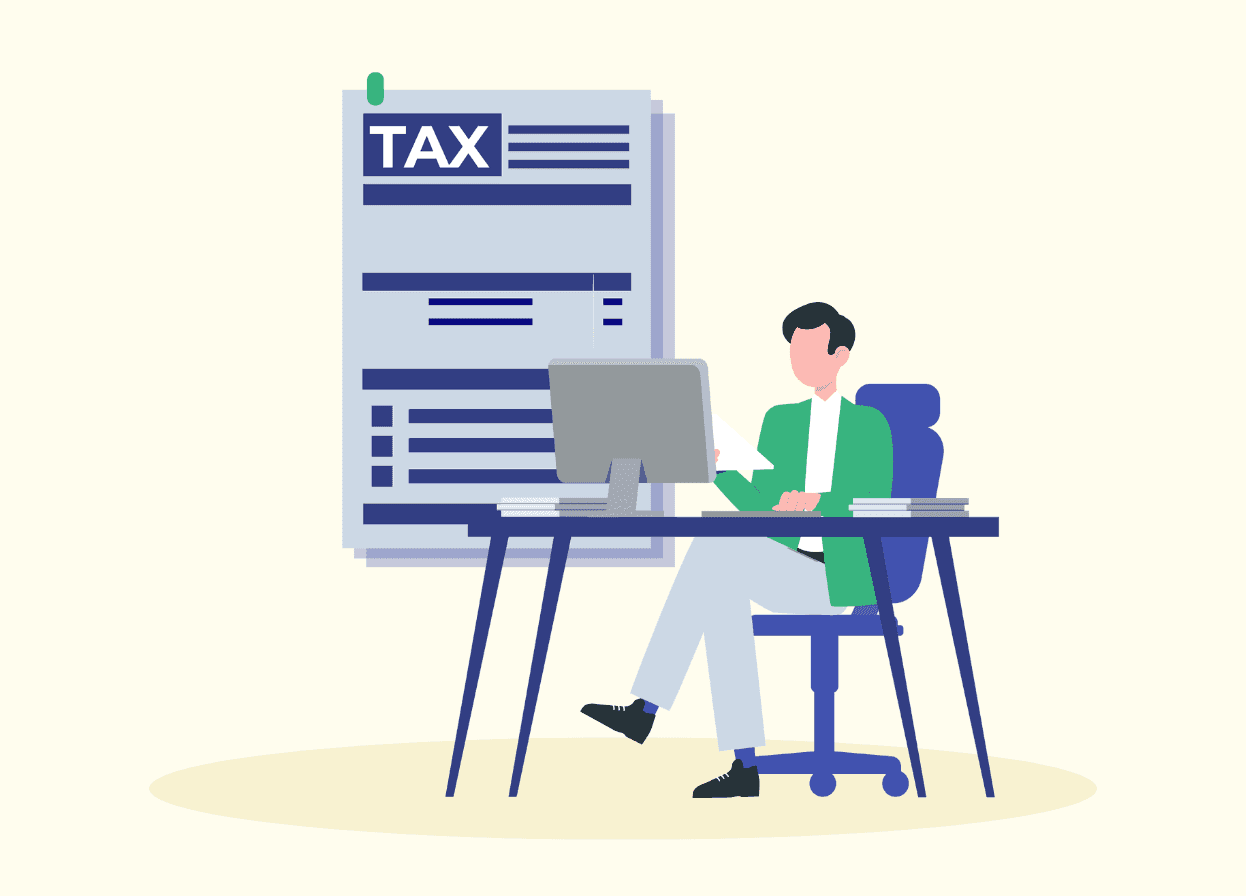How to Go Global With Your Design Business
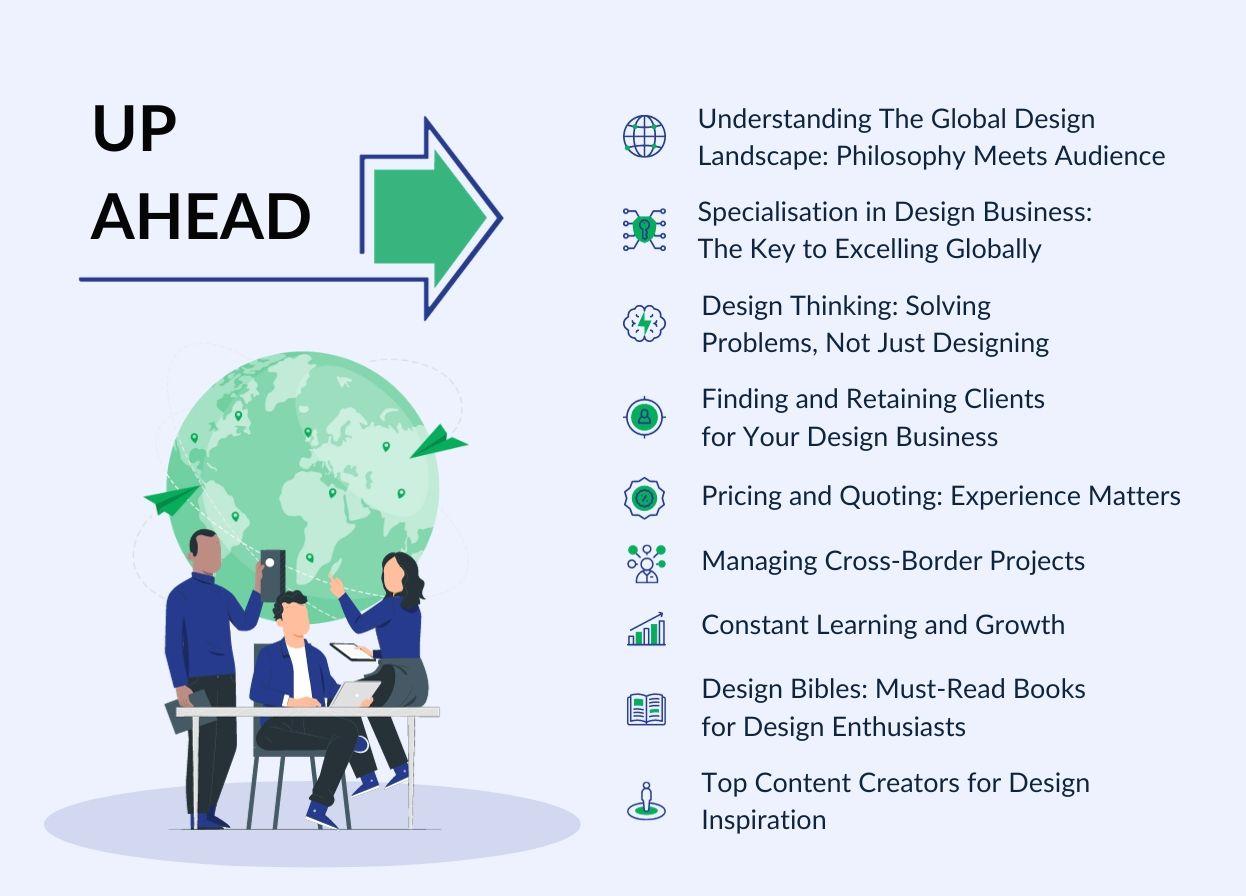

Imagine sipping chai in Mumbai while crafting designs for a client in New York—it's not a dream but a global design reality! The design universe is borderless; for budding Indian designers, the world is your canvas. Freelancing platforms like Upwork, Toptal, Deel, and Saday bridge distances, making global success just a click away.
How? Let’s explore strategies to initiate and expand your design business beyond borders!
Understanding The Global Design Landscape: Philosophy Meets Audience
Design is not simply about creating something aesthetically pleasing but about translating ideas into tangible works that the target audience can appreciate. It involves aligning philosophy with the target audience’s needs and mastering a range of crafts such as motion graphics, visual design (artistic/UI-UX), marketing (ad copies), fashion design, and more.
Each area has its unique subcategories, allowing designers to specialise and excel in specific domains.
For instance, in visual design, a graphic designer may specialise in creating striking logos that symbolise a company's core values, while a UI/UX designer focuses on crafting seamless and intuitive user interfaces for digital products.
In fashion design, one might specialise in sustainable, eco-friendly clothing, aligning their philosophy with a commitment to environmental consciousness.
Specialisation in Design Business: The Key to Excelling Globally
To succeed in the global design landscape, specialisation is pivotal. Clients often seek experts in particular areas, whether it is logo design, packaging, or UI-UX.
A survey by the Creative Group found that 62% of marketing and advertising executives believe that specialised skills are more important than a broad skill set when hiring creative professionals.
Design specialisation enables you to charge more for your expertise, offering superior value compared to a 'jack of all trades.' Find communities where you can complement your strengths and weaknesses by collaborating with other specialists. Platforms like Upwork can be a starting point to establish your presence and connect with potential clients.
Here are some design specialisations currently in demand.
- Product design
Product designers are responsible for designing almost every object used daily, from staplers and dining chairs to pens and electronics. It is a dynamic and rewarding business that blends creativity, functionality, and innovation.
As consumer expectations for well-designed, user-friendly, and sustainable products continue to rise, the demand for skilled product designers remains strong.
- UI-UX design
In today's low-code/no-code platforms era, where companies can create applications without involving software engineers, UI/UX design is becoming increasingly relevant.
A recent study revealed that 87% of hiring managers prioritise the recruitment of UX designers.
- Graphic Design
Graphic designers work on various projects, from branding and marketing materials to web graphics, packaging, and more, allowing for creative expression in various forms. Marketing graphic designers often solve visual communication challenges, making information more accessible and engaging. Many designers now also use tools like a video editing app to complement static visuals with dynamic content
Additionally, the global market size for graphic design is substantial, approximately $43.4 billion, highlighting the demand for design services across industries.
Design Thinking: Solving Problems, Not Just Designing
Clients seek designers who can effectively communicate and understand their design problems. This is why "design" is associated with "thinking".
Design thinking is fundamentally about problem-solving.
Every client is essentially presenting a problem, not just a project. As a designer, your goal is to provide solutions that address these problems effectively. Presenting proposals that clearly outline how you intend to solve the client's problems through design is the key to closing deals and establishing long-term relationships.
Here are the five steps to achieve optimum design thinking:
- Empathise: Research your users' needs
- Define: State your users' needs and problems
- Ideate: Challenge assumptions and create ideas
- Prototype: Start developing solutions
- Test: Try your solutions out
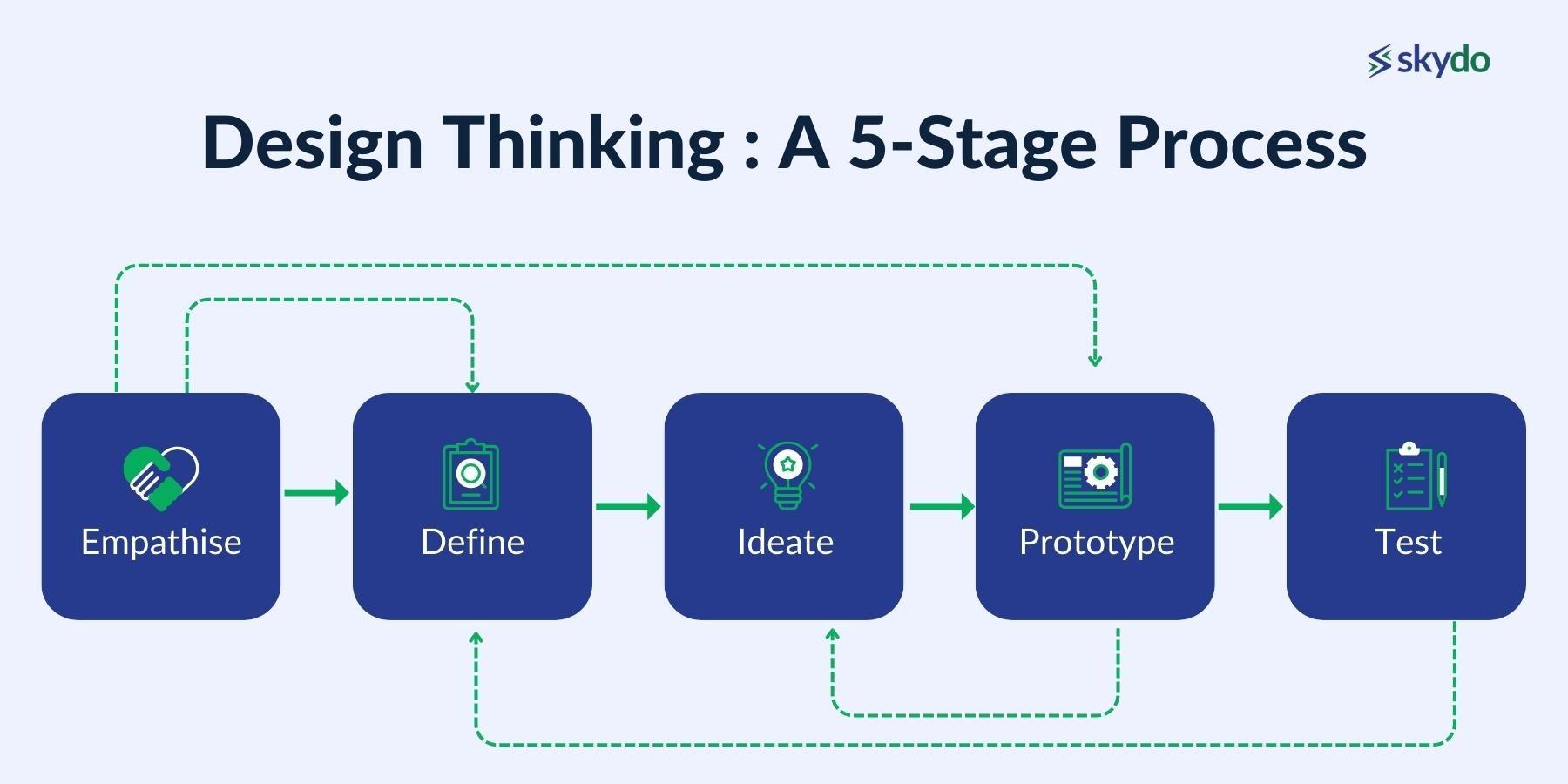
Netflix's evolution from a DVD rental service to a streaming giant exemplifies a profound application of design thinking. CEO Reed Hastings identified pain points in traditional movie consumption—late fees, inconvenience, and time delays.
Understanding users' frustrations, Netflix created a revolutionary concept: an online DVD rental service. By understanding their customers and implementing an online directory, they streamlined the process. Recognising the need for further innovation, they transitioned to a subscription model, eliminating per-DVD charges and late fees.
As internet usage surged, Netflix embraced online streaming, aligning with users' desire for instant, convenient access. The current UI/UX design reflects this journey, emphasising user-friendly features like hover-over previews and personalised recommendations.
With beta testing, Netflix continues refining its design, ensuring user-centricity. From problem-solving empathy in the DVD era to the seamless streaming experience today, Netflix's design thinking journey has been integral to its $153.41 billion success story.
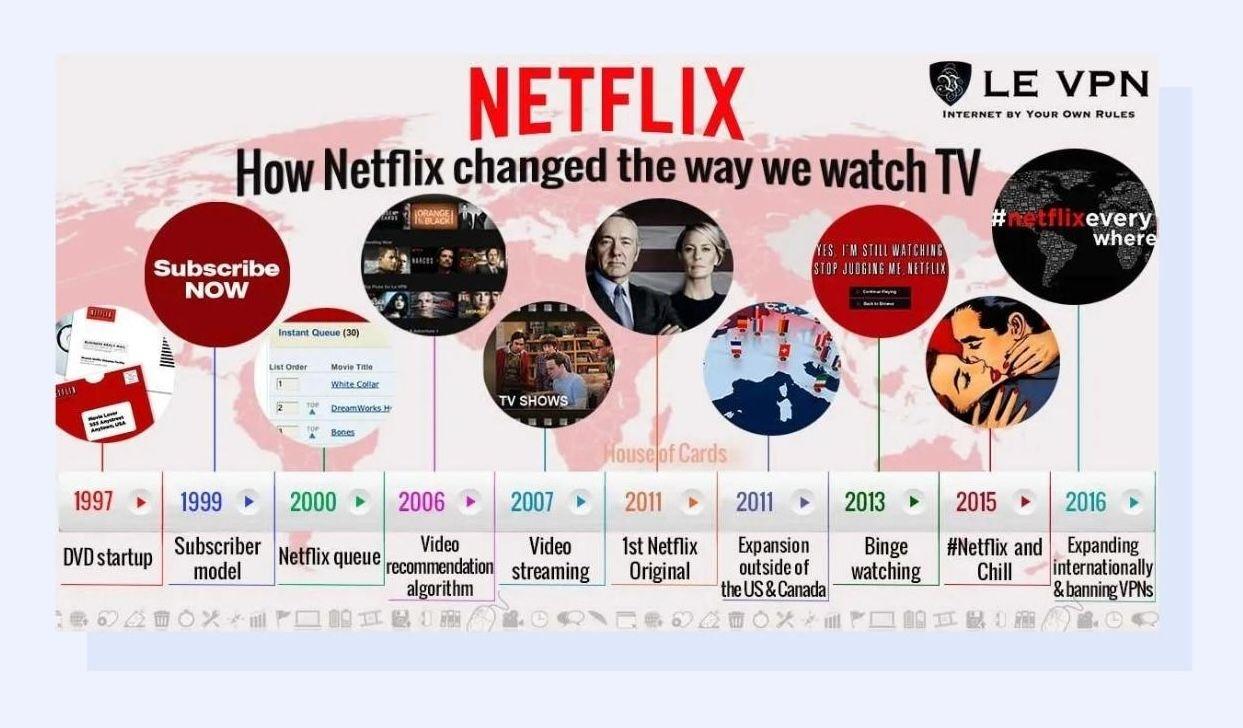
Finding and Retaining Clients for Your Design Business
Successfully finding and retaining clients is essential for business growth and sustainability. To kickstart this journey, your initial focus should be reaching out to potential clients through networking and showcasing your skills effectively. Then, once you've secured those clients, maintaining long-lasting relationships becomes equally vital.
Focus on creating a standout portfolio that showcases your design prowess and reflects your adaptability across different styles and projects. To execute this design marketing strategy, consider crafting dummy projects that simulate real-world scenarios and demonstrate your capabilities.
Additionally, to succeed globally, your portfolio should have a global appeal. Drawing inspiration from aspirational companies and creating dummy projects can help showcase your worldview. Utilise platforms like Behance to exhibit your work to a worldwide audience.
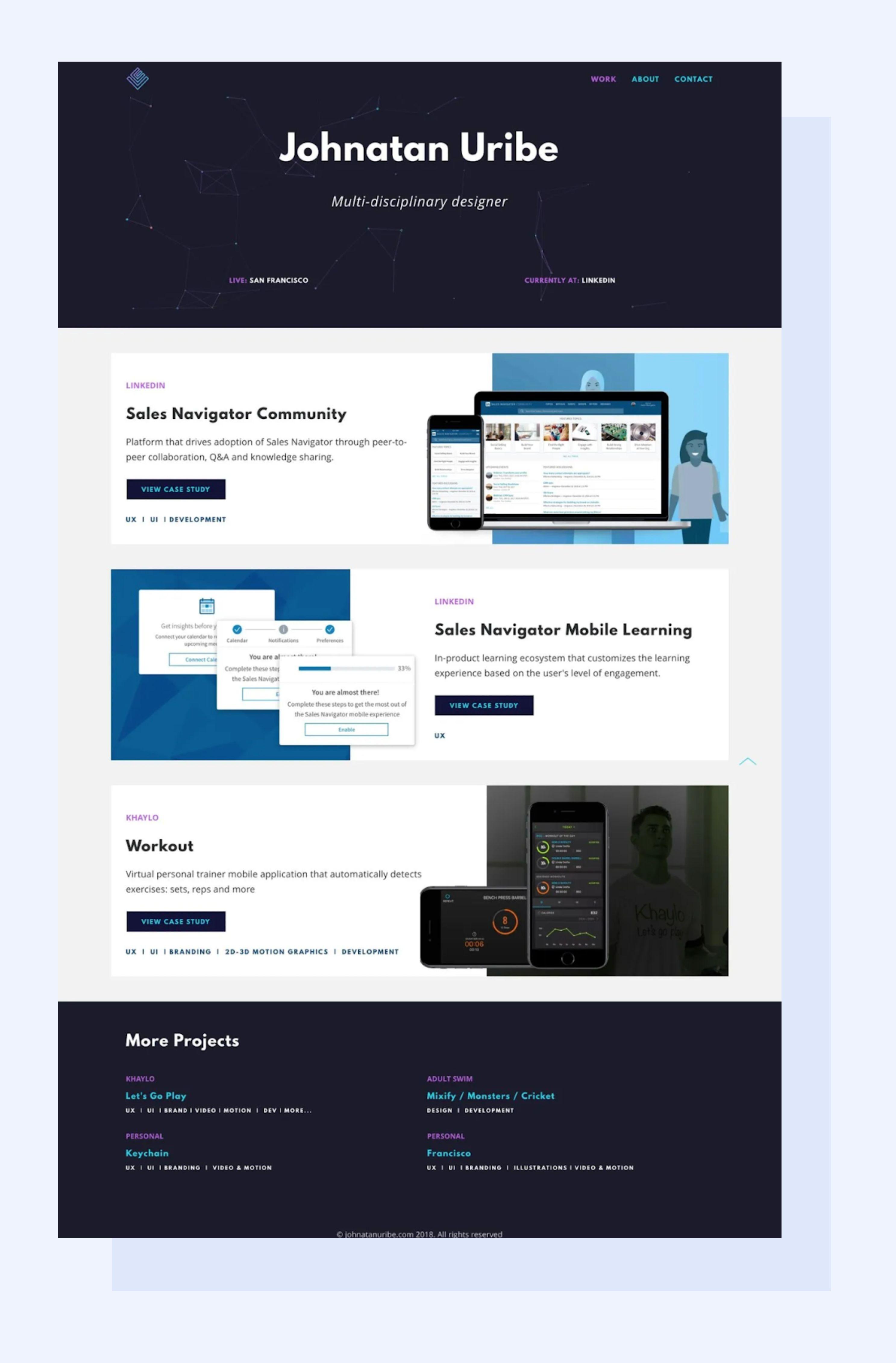 Fig: Example of Designers Portfolio Websites, Source: Jonathan Uribe, UX designer
Fig: Example of Designers Portfolio Websites, Source: Jonathan Uribe, UX designerBuild a strong online presence through a professional website and active social media engagement to increase visibility and credibility. Actively network within your industry, online and offline, to tap into potential clients and leverage word-of-mouth recommendations.
In the quest to find clients, cold outreach can be a powerful strategy. Platforms like LinkedIn, Behance, and Instagram provide opportunities to showcase your work, connect with potential clients, and share your expertise. Engage in conversations, join relevant groups, and establish your presence as a design expert.
Craft personalised and compelling messages highlighting your skills and the value you can bring to their projects.
Effective communication is pivotal; respond promptly to inquiries and articulate how your design skills align with the client's objectives. Beyond aesthetics, provide solutions that add tangible value to the client's brand.
Once you've secured a client, prioritise relationship building by maintaining professionalism, transparency, and reliability. Regularly update clients on project progress and seek feedback to refine your approach. Consider implementing client retention strategies such as loyalty programs and referral incentives.
Pricing and Quoting: Experience Matters
Hourly rates may not be suitable for design projects due to varying experience levels and efficiency. Past clientele and experience play a significant role in determining the pricing for design projects.
You can also explore the nuSchool website titled "How Much Should I Charge?" This platform guides you through straightforward inquiries about your design project, providing an estimation of the suggested price based on your responses.

Managing Cross-Border Projects
Understanding and respecting cultural norms is vital in the global design landscape. It extends beyond design aesthetics to presenting yourself appropriately, respecting different calendars, and acknowledging cultural sensitivities.
Additionally, platforms like Slack or Asana for efficient communication and project management, for seamless interaction and task tracking. Navigate time zone differences and incorporate video conferences for asynchronous communication to bridge global gaps.
For instance, if working with a Japanese client, respect their punctuality by ensuring you're on time for meetings. Adapting to diverse work styles and preferences for cross-border projects ensures smooth interactions and fosters lasting relationships with clients from various cultural backgrounds.
Constant Learning and Growth
Continuously learning and staying updated is critical in the dynamic field of design. A study by Udemy found that 80% of individuals agreed that learning new skills would increase their engagement.
Follow content creators like Futur and South, and leverage resources like typography books, Pinterest, Dribbble, and trends reports from renowned agencies for inspiration.
Engaging with these design resources and content creators will broaden your design horizons and provide practical insights and inspiration to fuel your creative journey.
Design Bibles: Must-Read Books for Design Enthusiasts
Expand your design knowledge with these pivotal books:
- "The Design of Everyday Things" by Don Norman.
- "Thinking, Fast and Slow" by Daniel Kahneman.
- "Sprint: How to Solve Big Problems and Test New Ideas in Just Five Days" by Jake Knapp, John Zeratsky, and Braden Kowitz.
- "Don't Make Me Think, Revisited: A Common Sense Approach to Web Usability" by Steve Krug.
- "Grid Systems in Graphic Design" by Josef Müller-Brockmann
Top Content Creators for Design Inspiration
Stay inspired with these remarkable content creators:
- The Future is Here (@thefutureishere): A hub for design knowledge, business insights, and inspiring interviews, providing a glimpse into the future of design.
- John Mauriello (@Design.Theory): Offering a unique blend of design showcases and tutorials, giving you a glimpse into the creative process.
- Satori Graphics (@satori_graphics): A treasure trove of design tutorials showcasing practical techniques and tips for aspiring designers.
- Bliss Foster (@blissfoster): An insightful content creator exploring design, art, and culture, offering a fresh perspective on the creative industry.
- Lauren Design Educator (@4thecreatives): A platform dedicated to educating and inspiring designers, providing valuable insights into design principles and strategies.
The design journey is a perpetual learning experience, and embracing this evolution is key to long-term success.
To Wrap Up
Designing without borders is an exciting venture, filled with opportunities to connect with diverse clients and showcase your creativity on a global stage. Specialisation, effective problem-solving, strong client relationships, and staying culturally aware are the cornerstones of a successful global design business. Stay inspired, keep learning, and embrace the interconnected world of design to scale your business beyond boundaries.
Frequently Asked Questions
Q1. What is global design, and why is it important for a design business?
Ans: Global design is the practice of creating designs that go beyond geographical boundaries and cater to a diverse, international audience. It is important for a design business because it opens up opportunities to reach a broader client base, tap into different markets, and showcase your creativity on a global stage.
Q2. How can I specialise in design, and why is specialisation essential for success in the global design landscape?
Ans: Specialisation in design involves focusing on a specific niche or area, such as UI-UX design, product design, or graphic design. Specialisation is crucial because clients often seek experts in particular fields, and you can charge more for your expertise, offering superior value compared to being a generalist.
Q3. What legal considerations should I consider when operating a global design business?
Ans: Running a global design business may involve legal considerations such as business structure, international copyright laws, contracts across borders, and tax implications. It's advisable to consult with legal experts or consider hiring an attorney specialising in international business law to ensure compliance with relevant regulations.
Q4. What are the potential challenges of working with clients from different cultural backgrounds, and how can I overcome them?
Ans: Working with clients from diverse cultural backgrounds may lead to challenges related to communication, differing work styles, and varying expectations. Being culturally sensitive, adapting to different communication preferences, and maintaining open and clear communication throughout the project are essential.

